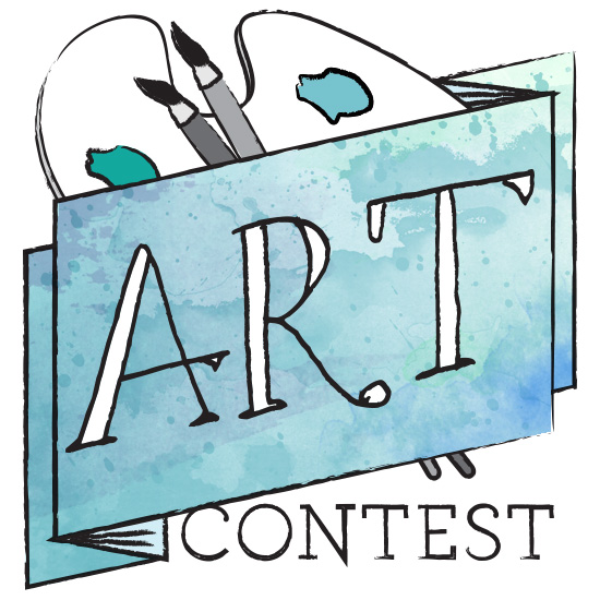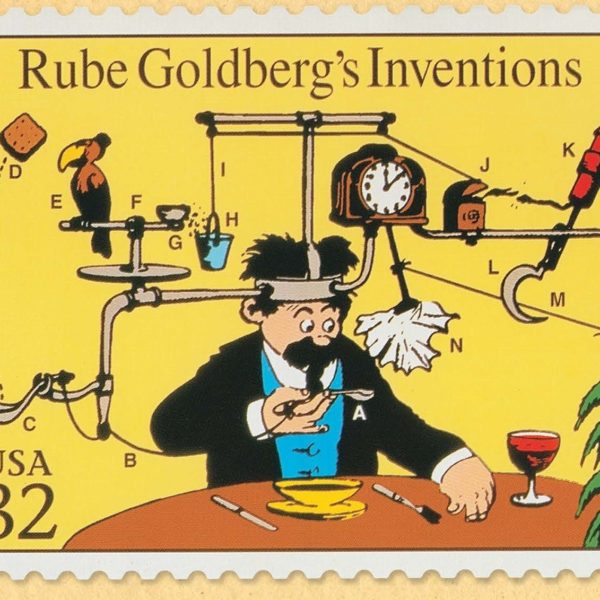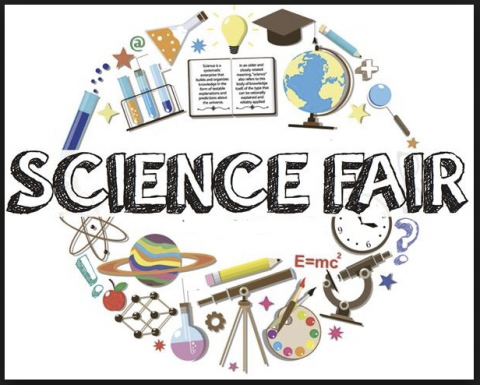
8th Grade Science Fair Winners
by Julia Shin
Congratulations to all of the Science Fair winners and good luck to all of the winners for County!
8th Grade
1st Place – Tanishga Thankaraj Vijay & Harshini Manikandan
Project Title: Determining Factors that Affect a Fan’s Performance

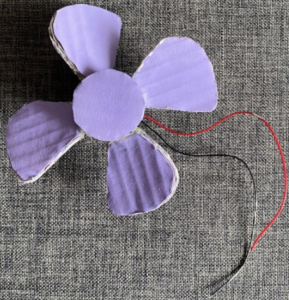
This fusion of an experiment and an engineering project was focused on determining which type of blade shape will generate the most voltage. Tanishga and Harshini created five common fan blades from cardboard and attached a bottle cap and a rod of a DC motor to the blades to complete the fan. Then, all of the five fans were positioned facing a house fan (maintaining equal distance and speed for each fan) as a multimeter measured the electricity generated. They discovered, the purple fan, as shown above, was the best design. As Tanishga and Harshini have an interest in the field of wind energy, they wanted to understand better how fans work, like the ones used in everyday life. From this project, they learned how the most important factors affecting a fan’s performance are the number of fan blades, the surface area, and the angle. Furthermore, they learned about the various fans and each of their unique purposes. Thus, they learned about the balance between having the least number of blades, however, not letting that comprise the loudness of the sound created by the fan or the fan’s effectiveness.
2nd Place – Jasper Mejia
Project Title: Solar Mini Fridge V2
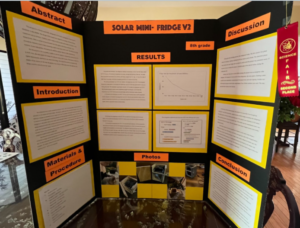
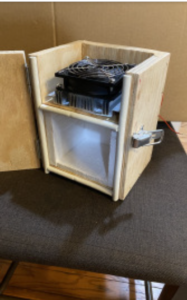
This engineering project was inspired by Jasper’s mom, who’s a Type 1 diabetic. Being a diabetic, she requires insulin to survive. Thus, for emergency purposes, when electricity may be unavailable, this solar-powered mini-fridge stores and cools insulin for insulin to be useable (for the fridge to be successful, it much reach a temperature between 34.0˚F – 40.0˚F). Also, since the fridge is solar-powered, it eliminates using multiple batteries just once. As Jasper shared, he believes this project could help people around the globe who have pre-existing conditions. From this project, he learned about various techniques of heat transfer and how to use different insulators to counter each of those methods. For example, he used wood, foam, and aluminum since they are all materials used to stop the heat. Additionally, he learned about how to have a polished final project, many prototypes have to be created and constantly revised.
3rd Place – William Kim
Project Title: Detecting Ink Levels With Image Processing

The purpose of this engineering project was to create an efficient and easy-to-use indicator that notifies the user how much ink is left inside a pen. Before using the pen, the ink level is determined and shown to the user so the ink container does not have to be removed (yet, this prototype mostly requires taking out the ink container to use it). William chose this project because he believed being able to view how much ink is left in a pen is very practical for daily life and it would help numerous people. From this project, he shared he learned that image processing can be very useful and that other future technological developments can solve other various common problems.
Honorable Mention – Iden Stein & Jamieson Wong
Project Title: The Odds of Cheating in Blackjack

The purpose of this experiment was to stimulate methods to count blackjack cards and discover how much money people collected from their bets. As Iden shared, he believed, “creating a blackjack simulation that card counts tens of millions of hands in minutes is absolutely awesome.” From this project, Iden and Jamieson learned that in simulations, there aren’t big differences in different card counting methods yet in real life, there are big differences.


